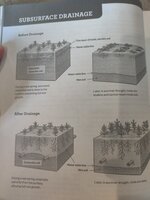UR20Z
Dumpster Diver
My source is 30 years of animal husbandry, I've owned at least one horse continuously since I was 5 years old.
Then you're roughly 20 years behind me, experience-wise.
Hoofs don't fall off due to poisoning in my experience that's either a symptom of hoof rot or severe infection or truly severe and massive trauma to the hoof.
While I'd generally agree, with a bad enough case of laminitis, which is usually the first and most obvious symptom of juglone exposure, the effect is the same as you trying to wear a too-loose slip-on shoe. If/when enough of the laminae are damaged/destroyed by the inflammation (Laminitis = "inflammation of the laminae", as an experienced horse-person ought to know) the hoof itself is no longer securely connected to the underlying structures. Which is why a laminitic horse MUST be monitored for coffin-bone rotation - Without the laminae attaching the hoof wall to the rest of the foot, the coffin bone tends to drop and rotate, and in a severe enough case, can cause the hoof to detach compeltely and fall off. Exactly as I saw happen - between one step and the next, she "stepped out of" her hoof, leaving it in the print that it had just made in the snad/gravel of the driveway. When she tried to complete the step by putting down the bloody mass that was now the end of her leg, she screamed like she'd been stabbed, and went down. She never stood up again - Gramps went white as a sheet, then ran for the house, cussing a blue streak all the way, and came back with the .30-30 to put her down on the spot minutes later.
Even that would be doubtful, I'm thinking - Especially where the event took place. The only snake I can think of that's likely to cause that sort of damage would be the coral snake, and those simply don't exist in Michigan, unless they're in captivity - Winters are too cold for them to survive outside.Possibly from snake bite but that's an extremely unlikely case.
The only venomous snake known (I've heard many rumors over the years claiming that you can encounter the occasional cottonmouth if you look hard enough, but never seen any evidence to back those claims) to inhabit the area is what I grew up knowing as the "Michigan rattler", which I later learned is properly termed the Eastern Massasauga Rattlesnake. Supposedly, the entire lower Peninsula, and part of the eastern end of the U.P. of Michigan is "home range" for them, but I've only ever seen two of them in-person, and only one of those was "for certain" - That one was on display in a glass case at the Clinch Park Zoo in Traverse City, back in the 80s, and the tag said it had been captured near Cadillac. The other was a sighting that lasted all of about 5 seconds, and at enough distance that the identification is quite suspect. Saw it while I was slogging through the marsh near the south approach to the Sleeping Bear Dunes area - It was moving fast, and visible so briefly that I can't claim to be absolutely certain it wasn't just a young/small rat snake. Either way, it's a "shy" snake, and unlikely to be where the horse was (they prefer swampy areas, by all accounts I've read) and even if one had been around, everything I know about them says that they're more likely to flee than bite, and if they do bite, their venom is said to be comparatively weak.





